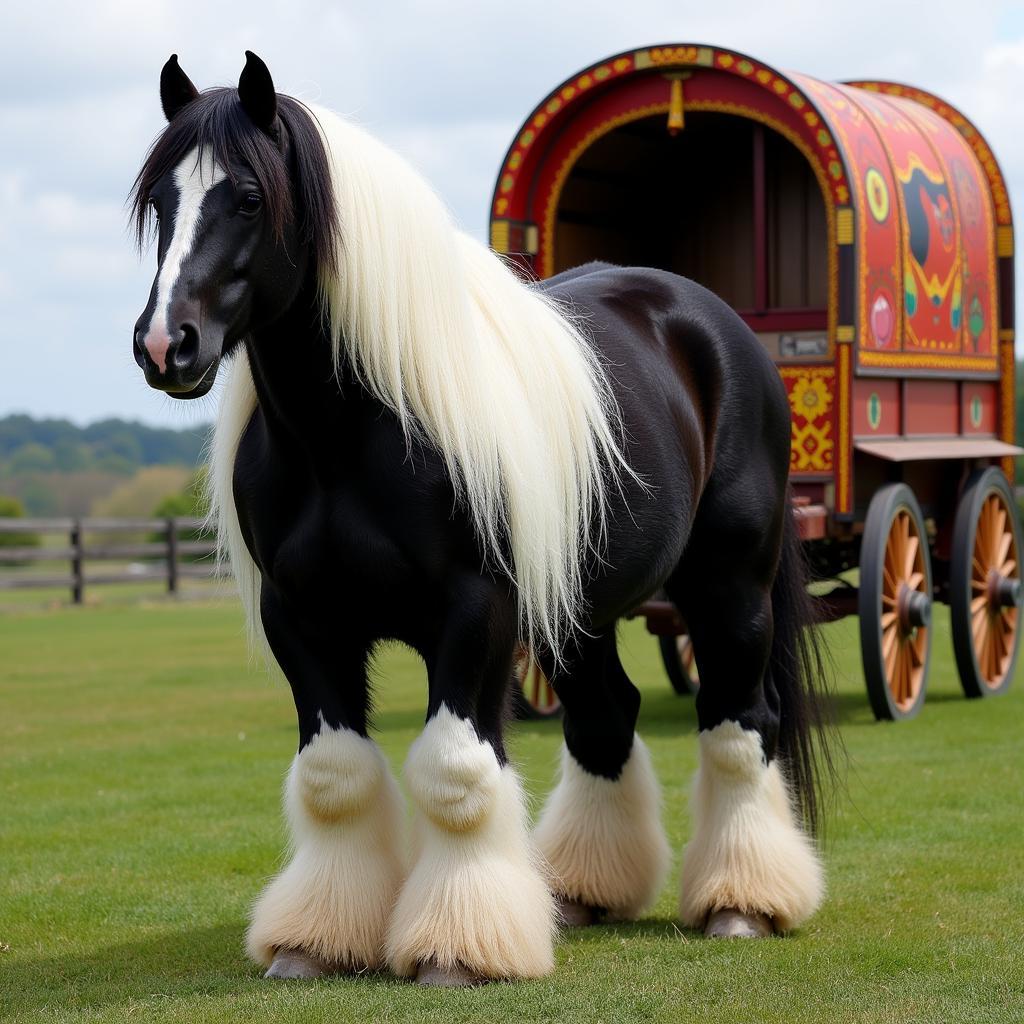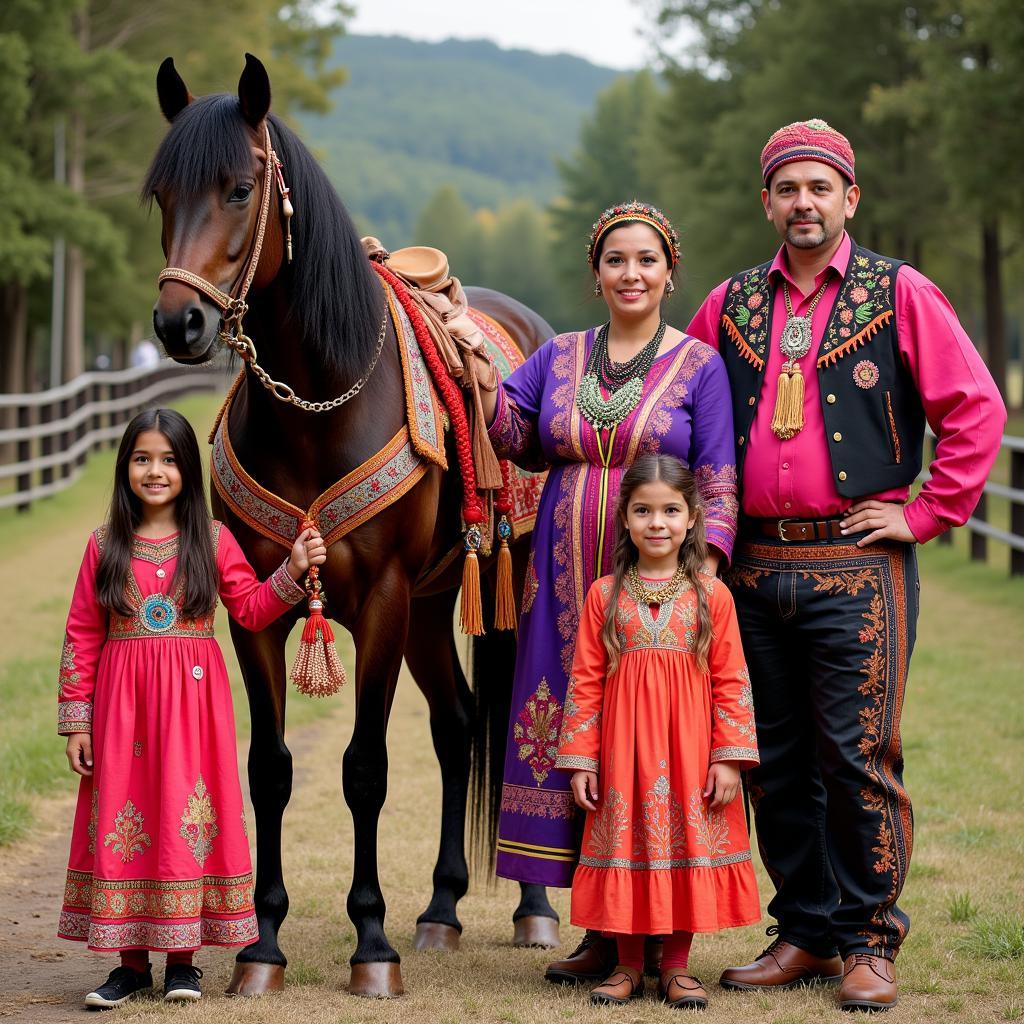The Gypsy Horse Society is more than just a group of horse enthusiasts; it’s a testament to a vibrant culture and a living history intertwined with the majestic Gypsy Vanner horse. Often referred to as the “Gypsy Cob” or “Irish Cob,” these horses are instantly recognizable with their flowing manes and feathers, sturdy builds, and gentle temperaments. But beyond their striking appearance, the Gypsy Horse Society plays a crucial role in preserving the breed’s legacy and promoting responsible breeding practices.
 A Gypsy Vanner horse stands proudly in front of a traditional caravan, showcasing the breed's deep-rooted connection to Romani culture.
A Gypsy Vanner horse stands proudly in front of a traditional caravan, showcasing the breed's deep-rooted connection to Romani culture.
Origins of the Gypsy Horse: A Journey Through Time
The history of the Gypsy Horse is deeply intertwined with the Romani people, an ethnic group with origins in the Indian subcontinent. For centuries, the Romani people traveled across Europe, and horses were essential to their nomadic lifestyle. They needed horses strong enough to pull their vardos (caravans) yet gentle enough to be handled around their families and children.
 A Romani family, dressed in traditional attire, poses with their prized Gypsy Vanner horse, showcasing the strong bond between the community and their horses.
A Romani family, dressed in traditional attire, poses with their prized Gypsy Vanner horse, showcasing the strong bond between the community and their horses.
Characteristics of the Gypsy Vanner: Beauty and Strength Combined
The Gypsy Vanner is a relatively modern breed, with its studbook first established in the mid-20th century. However, their lineage is rooted in centuries of selective breeding. These horses possess a unique combination of traits:
- Distinctive Appearance: Abundant feathering on their lower legs, a long, flowing mane, and a full tail are hallmarks of the breed.
- Sturdy Build: Their compact, muscular bodies make them capable of pulling heavy loads.
- Gentle Temperament: Known for their calm, willing personalities, making them ideal family horses.
- Color Variety: Gypsy Vanners come in a range of colors, with piebald and skewbald patterns being the most common.
The Role of the Gypsy Horse Society: Preservation and Promotion
The Gypsy Horse Society plays a vital role in protecting the future of the breed. This is achieved through:
- Maintaining the Breed Standard: The Society establishes and upholds the breed standard, ensuring consistency and quality in breeding practices.
- Issuing Registration Papers: Pedigree records are meticulously maintained to track bloodlines and promote responsible breeding.
- Organizing Shows and Events: The Society provides a platform for breeders and owners to showcase their horses and connect.
Beyond the Show Ring: The Gypsy Vanner’s Versatility Shines
While admired for their beauty, Gypsy Vanners are incredibly versatile horses. They excel in various disciplines:
- Driving: Their strength and stamina make them ideal for driving competitions and pleasure driving.
- Dressage: Their calm temperament and trainability allow them to perform well in dressage.
- Therapeutic Riding: Their gentle nature makes them suitable for therapeutic riding programs.
The Gypsy Horse: A Symbol of Resilience and Cultural Pride
The Gypsy Horse stands as a symbol of resilience and the enduring spirit of the Romani people. Despite facing prejudice and discrimination, the Romani have kept their traditions alive, and the Gypsy Vanner horse remains an integral part of their cultural heritage.